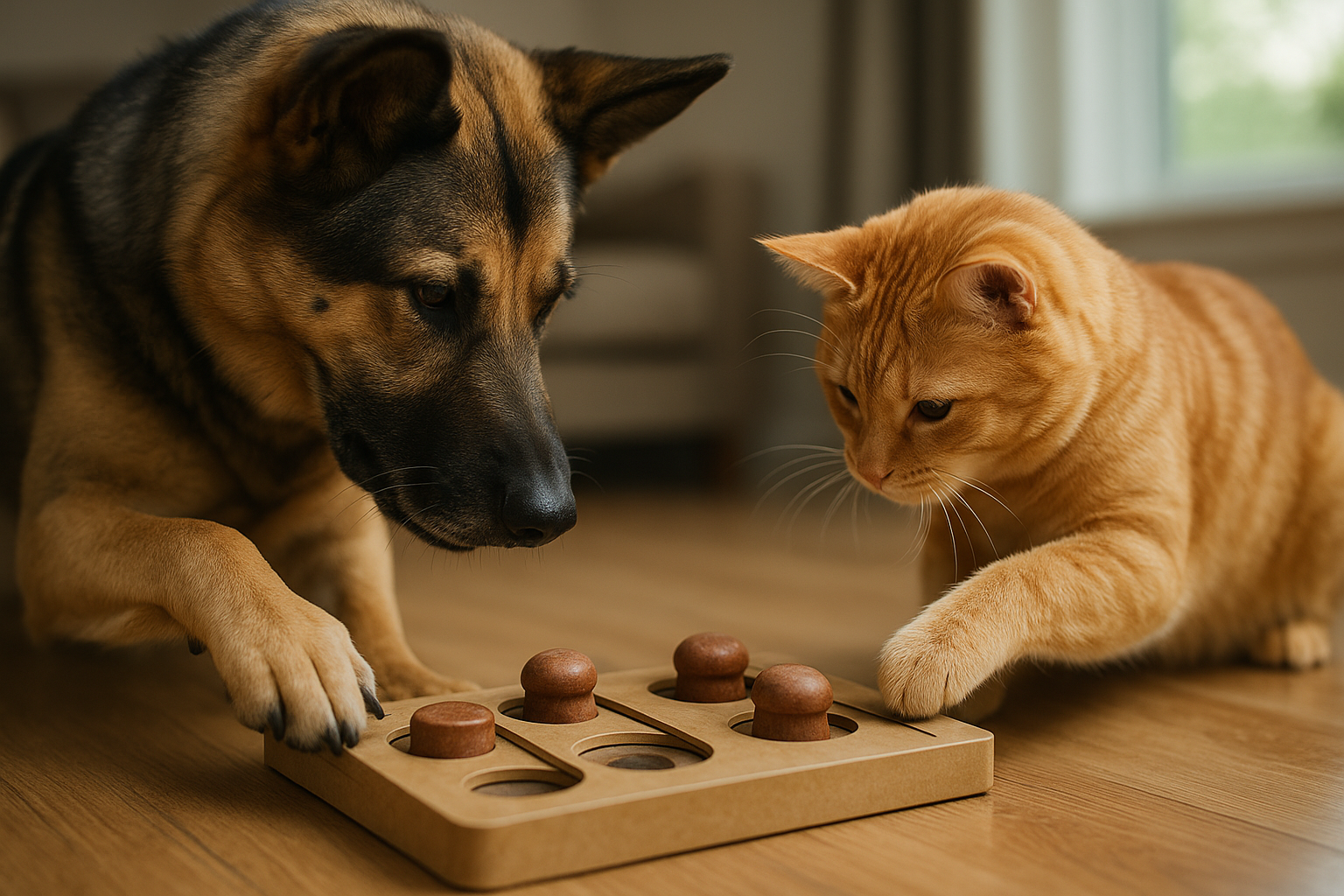Adapting living spaces to support mobility in aging companions
As pets age, thoughtful changes to the home can make movement safer and more comfortable. This piece summarizes practical adjustments to living spaces that support mobility for senior companions, including environmental adaptations, low-impact enrichment, and routine changes to preserve independence and wellbeing.

Older pets commonly experience gradual declines in mobility that change how they navigate their surroundings and interact with caregivers. Adapting living spaces to reduce obstacles, improve traction, and encourage safe, manageable activity can enhance comfort and preserve independence. Effective modifications balance safety with opportunities for gentle enrichment and social interaction, while keeping daily routines predictable to reduce anxiety and maintain confidence.
How can enrichment and puzzles support mobility?
Incorporating enrichment and puzzles tailored to mobility limitations encourages light movement and mental stimulation without taxing joints. Use low-profile puzzle feeders that dispense treats with minimal pawing or nosing, and place them on stable, non-slip surfaces. Rotate scent-based toys and simple tactile puzzles to maintain interest while avoiding items that require jumping or sustained balance. Short enrichment sessions spread across the day boost motivation for brief walks and help preserve cognitive function and muscle use in a safe way.
How does behavior and socialization change?
Behavioral shifts in senior pets often stem from discomfort, sensory decline, or altered routine; socialization needs can change as well. Keep interactions calm, predictable, and brief to avoid overwhelming animals with reduced stamina or hearing. Modify household routes to minimize abrupt obstacles and loud traffic, and encourage gentle socialization—slow introductions to visitors, brief play, and quiet bonding times. Observing signs like increased clinginess, restlessness, or withdrawal can inform changes to the environment and help maintain healthy social habits.
What nutrition and dental care adjustments are helpful?
Nutrition plays a key role in maintaining mobility; diets formulated for older pets often balance protein, calories, and joint-supporting nutrients, though any change should follow a veterinarian’s advice. Make food and water easily accessible by placing bowls at comfortable heights and using raised, stable dishes to reduce neck strain. Dental care remains important because oral pain can reduce appetite and activity—regular brushing, dental chews suited for seniors, and veterinary dental checkups help preserve comfort and overall wellbeing.
How can training, routine, and exercise be adapted?
Training for older companions focuses on gentle reinforcement and predictable cues rather than intensive new skills. Short, consistent sessions that practice controlled leash walking, step negotiation, or simple balance exercises can support joint function without overexertion. Establish a routine that spaces activity and rest evenly through the day, and choose low-impact exercise options—slow walks, guided indoor movement, or hydrotherapy where available. Gradually increase duration only if the pet tolerates it and a professional recommends doing so.
What habitat, safety, and grooming modifications work?
Adjust the habitat to reduce fall risks and make daily life easier: add non-slip rugs, secure loose cords, and install ramps or low steps to access beds or furniture. Provide supportive, low-entry beds in quiet areas and ensure pathways to litter boxes or doors are well lit. Regular grooming helps detect skin issues, prevents matting that restricts movement, and can be comforting; keep sessions calm and use grooming tools that do not stress joints. Small safety changes can significantly reduce accidental slips and strengthen mobility confidence.
Which toys, bonding, and senior care options assist moving?
Choose toys that promote gentle interaction—soft squeakers, scent toys, or treat-dispensing devices that reward modest movement. Prioritize bonding through massage, short lap time, and interactive play that encourages circulation and flexibility without strain. Senior care aids such as harnesses, support slings, orthopedic bedding, and non-slip booties can assist mobility. Consult local services or a veterinarian to match tools and therapies to your pet’s specific needs, ensuring any aid enhances mobility rather than restricting natural movement.
This article is for informational purposes only and should not be considered medical advice. Please consult a qualified healthcare professional for personalized guidance and treatment.
Adapting a living space for an aging companion involves practical safety upgrades paired with opportunities for gentle enrichment, consistent routine, and attention to nutrition and dental care. Thoughtful adjustments help maintain independence, reduce injury risk, and preserve the bond between caregiver and pet as mobility changes over time.





